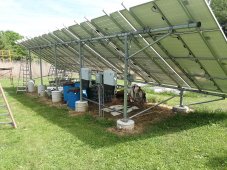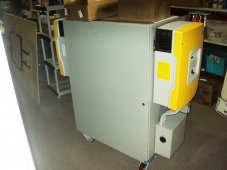The convenience of a grid-tied system is important to me and it would be nice to pay for my system with the savings from my energy bill. I don't like that because I'm grid tied, in a blackout I don't have power (I understand it's for the safety of the line workers).
So I've been looking up a smaller grid-tied system (that will really only augment my bill, not erase it) that can be hard-switched to an off-grid system in an emergency. Essentially I'd have the same micro-inverter panels powering either one or the other but not both.
My question is, in the off-grid system...what are my options? It would only be for emergencies and only need to run, at most a well pump. I'm wildly OK with having 8 hours of sunlight energy and just going dark at night. My ignorance stems from how the batteries function in the system. With the fluctuation in power output from the panels (weather etc) I think the batteries sort of...level out the output.
If I'm producing FAR more power than I'm actually using, do I need that battery 'buffer'?
For example, if I buy a 6000w system. Using the above system, I switch the whole system to an outlet and I use that outlet to charge my kindle. I'm using so little that the entire hour it's charging I never get CLOSE to the power produced...do I still need that battery?
So I've been looking up a smaller grid-tied system (that will really only augment my bill, not erase it) that can be hard-switched to an off-grid system in an emergency. Essentially I'd have the same micro-inverter panels powering either one or the other but not both.
My question is, in the off-grid system...what are my options? It would only be for emergencies and only need to run, at most a well pump. I'm wildly OK with having 8 hours of sunlight energy and just going dark at night. My ignorance stems from how the batteries function in the system. With the fluctuation in power output from the panels (weather etc) I think the batteries sort of...level out the output.
If I'm producing FAR more power than I'm actually using, do I need that battery 'buffer'?
For example, if I buy a 6000w system. Using the above system, I switch the whole system to an outlet and I use that outlet to charge my kindle. I'm using so little that the entire hour it's charging I never get CLOSE to the power produced...do I still need that battery?




